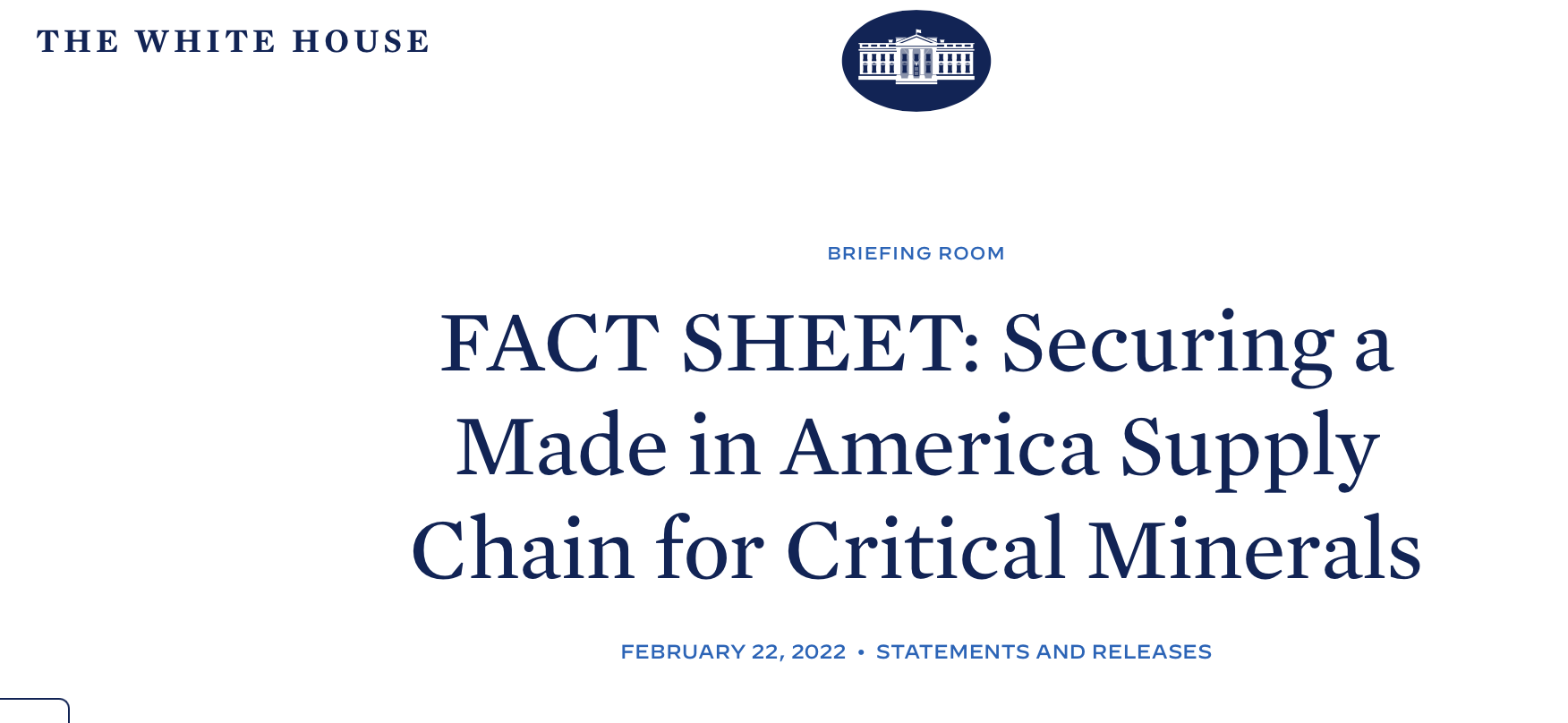Lithium Boom Across California and Nevada
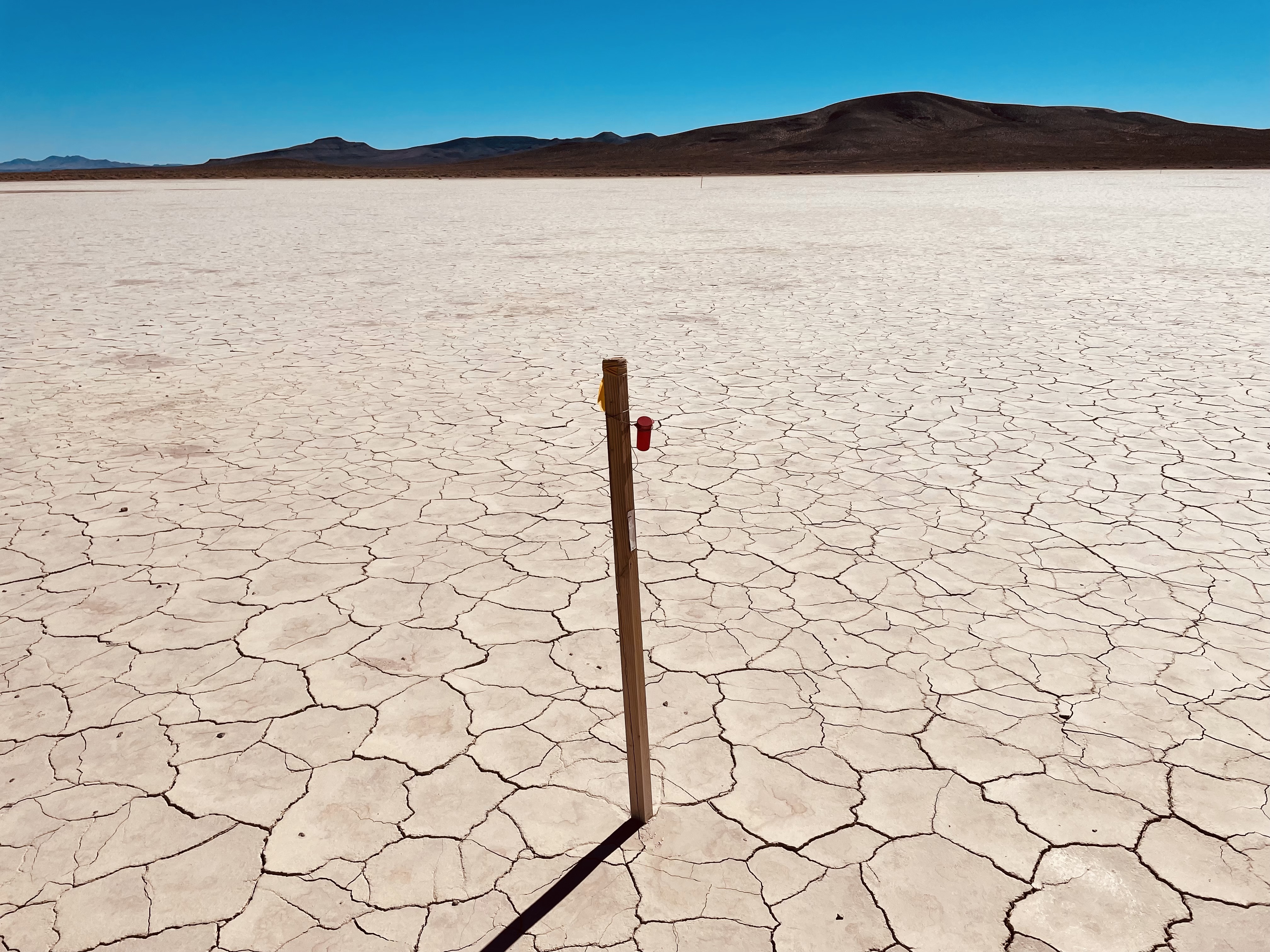
^Lithium claim stake on a playa in Sarcobatus Flat, NV, east of Death Valley National Park.
February 22, 2022 - An "ion rush" is currently underway in arid lands of southern California and Nevada as miners literally stake claim markers on playas and open deserts east of Death Valley National park in Nevada. Similarly, the Biden Administration on February 22 announced large investments in so-called "critical minerals" such as Lithium, cobalt, and rare earth minerals used in renewable energy manufacture, batteries, and electric vehicles.
The White House Fact Sheet announced that outdated mining laws and regulations will be updated. This year, the Mining Law of 1872 turns 150. This law still governs mining of most critical minerals on federal public lands. Today, the Department of Interior (DOI) announced it has established an Interagency Working Group (IWG) that will lead an Administration effort on legislative and regulatory reform of mine permitting and oversight. The IWG released a list of Biden-Harris Administration fundamental principles for mining reform to promote responsible mining under strong social, environmental, and labor standards that avoids the historic injustice that too many mining operations have left behind. The IWG will deliver recommendations to Congress by November. They will also host extensive public input and comment sessions to ensure an inclusive process, and will work with the relevant agencies to initiate updates to mining regulations by the end of the calendar year.
Mountain Pass Mine
The White House Fact Sheet says: President Biden will announce that the Department of Defense’s Industrial Base Analysis and Sustainment program has awarded MP Materials $35 million to separate and process heavy rare earth elements at its facility in Mountain Pass, California, establishing a full end-to-end domestic permanent magnet supply chain. Paired with this catalytic public funding announcement, MP Materials will announce it will invest another $700 million and create more than 350 jobs in the magnet supply chain by 2024. Currently, China controls 87 percent of the global permanent magnet market, which are used in EV motors, defense systems, electronics, and wind turbines.
Salton Sea
The Fact Sheet also describes how Berkshire Hathaway Energy Renewables (BHE Renewables) will announce that this spring, they will break ground on a new demonstration facility in Imperial County, California, to test the commercial viability of their sustainable lithium extraction process from geothermal brine as part of a multibillion-dollarinvestment in sustainable lithium production over the next five years. If successful, this sets the company a path towards commercial scale production of battery grade lithium hydroxide and lithium carbonate by 2026. Imperial Valley contains some of the largest deposits of lithium in the world. Once at scale, BHE Renewables facilities could produce 90,000 metric tons of lithium per year.
In addition to BHE Renewables, Controlled Thermal Resources (CTR) and EnergySource Minerals have established operations in Imperial County to extract lithium from geothermal brine. GM will source lithium for EV batteries from CTR. The companies are also working with the state-authorized Lithium Valley Commission to develop a royalty structure that would invest profits from their operations in infrastructure, health, and educational investments for the residents of the surrounding region.
Lithium Claims East of Death Valley National Park
In the last few years we have encountered several Lithium claims, marked out by stakes, on playas and open Joshau tree desert in Sarcobatus Flat on Nevada lands managemed by the Bureau of Land management, just east of Death Valley National Park. How active or speculative these claims are, we do not know. Photos from 2022 follow.

^The paper claim in the plastic vile attached to the wooden claim stake on the playa.
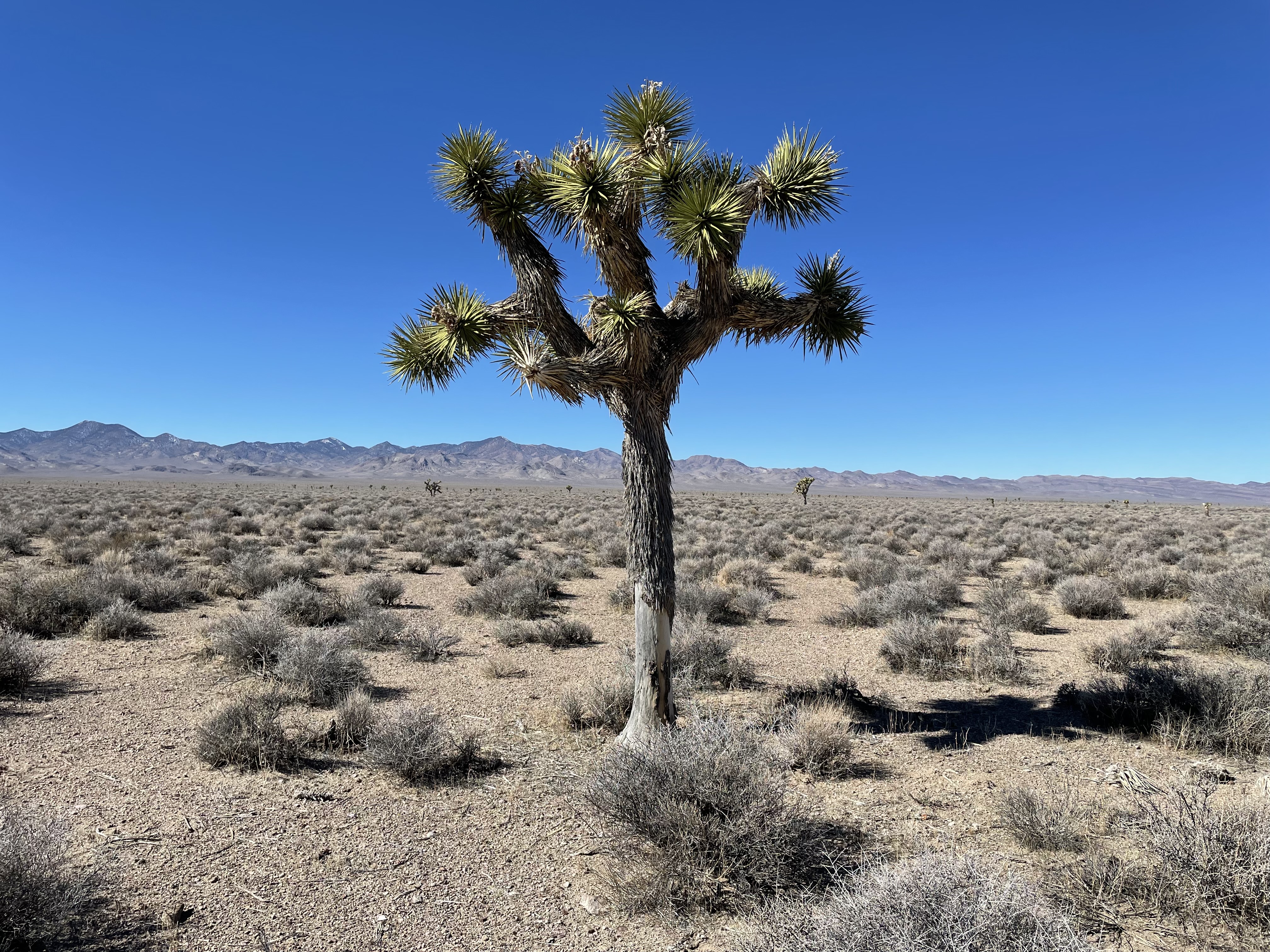
^Western Joshua tree on Sarcobatus Flat, Nevada, just east of Death Valley National Park, where we found Lithium claim stakes.
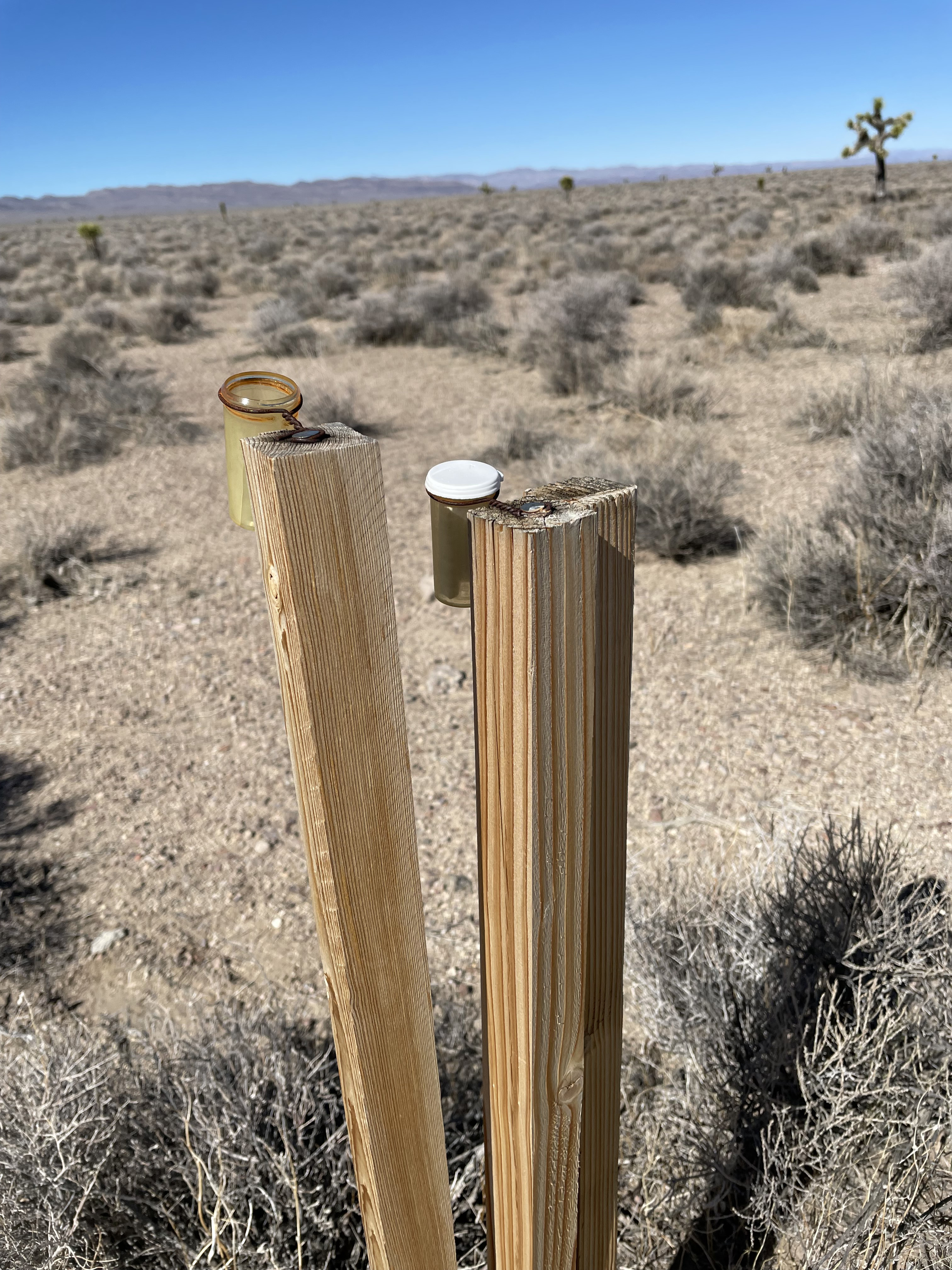
Lithium claim stakes, Sarcobatus Flat, NV. Public lands.
Silver Peak Lithium Brine Mines Expand
Basin & Range Watch volunteers regularly visit the Clayton Valley area of Nevada, southwest of Tonopah, a deep basin which holds the only active Lithium brine mining area in the U.S., served by the small town of Silver Peak. We have observed the large playa lakes with Lithium extraction units expanding in recent years. This water-intensive process is in stark contrast to the surrounding hyperarid desert. Groundwater pumping may deplete the aquifer in time. Our photos over the last few years follow, including recent photos from 2021.
Panamint Valley Lithium Exploration Project Approved
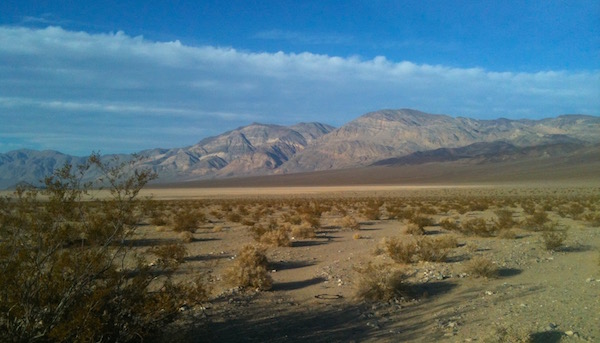
August 11, 2018 - Inyo County CA - The Bureau of Land Management on August 9 authorizesd Battery Minerals Resources California Inc. to drill at four exploration sites on mining claims adjacent to designated roads.
In June, the Trump Administration released, “A Federal Strategy to Ensure a Reliable Supply of Critical Minerals,” to make America’s economy and defense more secure. The strategy directs the U.S. Department of the Interior (DOI) to locate domestic supplies of those minerals, ensure access to information necessary for the study and production of minerals, and expedite permitting for minerals projects. This project is consistent with the strategy and with Executive and Secretary's orders for critical mineral commodities by attempting to locate lithium from federal lands.
Lithium is as a component of high energy-density rechargeable lithium-ion batteries. Lithium consumption for batteries has increased significantly in recent years because rechargeable lithium batteries are used extensively in the growing market for portable electronic devices and in electric tools, electric vehicles, and grid storage applications.
We support Lithium batteries but extraction should only take place at sites with the least environmental consquences. Panamint Valley lies alongisde the Panamint Mountains and next to the boundary of Death Valley National Park.
If commercial quantities of Lithium are found here, the impacts could balloon to significant levels as extraction of Lithium requires large evaporation lakes where groundwater is pumped to form brines. Clayton Valley to the north in Nevada is one of the few active large-scale Lithium mining operations in North America, and it has expanded in the last several years.
The environmental assessment and the Decision Record are available at ePlanning.
^Largescale brine lakes evaporating Lithium salts at industrial site in Clayton Valley, Nevada. This is all pumped groundwater.
^Section of Lithium evaporation lakes in Clayton Valley, Nevada, seeen from Montezuma Peak (with a bee flyby).
Lithium Exploration Proposed in Panamint Valley
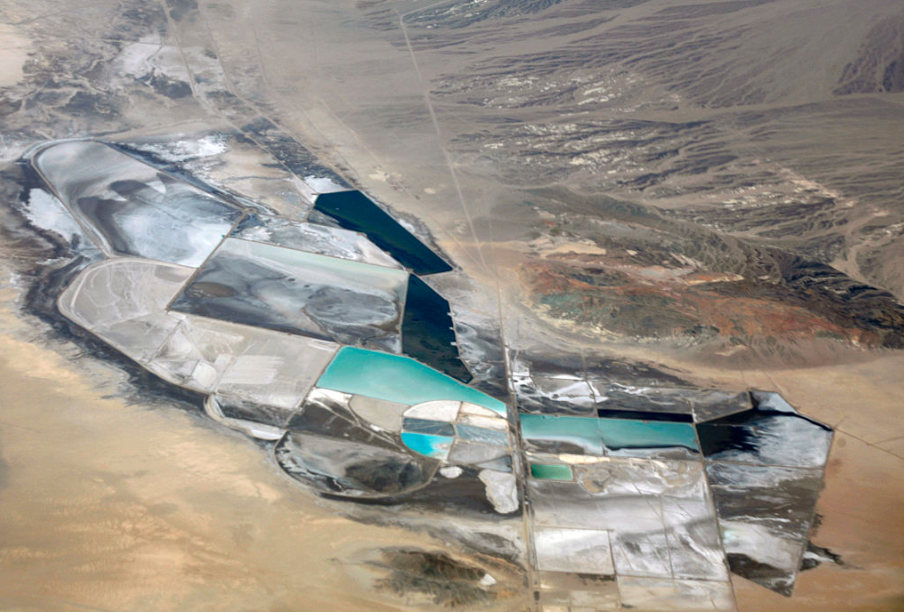
^Lithium extraction lakes in Clayton Valley, Nevada at Silver Peak. (Photo courtesy Wikipedia Commons)
March 16, 2019 - Panamint Valley, California Desert - As we have been expecting, the Bureau of Land Management (BLM) has released an Environmental Assessment (EA) for lithium exploration in Panamint Valley. While lithium exploration on playas is highly speculative, we can all agree that the idea of a huge lithium extraction project in Panamint Valley would be a very bad idea next to Death Valley National Park. But BLM is considering it. Comments due April 15th.
This is a designated National Conservation Land under the Desert Renewable Energy Conservation Plan (DRECP), with a 1% development cap. This equates to about 200 acres allowable for surface disturbance, far below what an operating lithium extraction process would need to be profitable--with wells pumping groundwater to evaporate vast acreages of salts in a playa pool to yeild lithuim in commercial quantities. And few playas in Nevada and California have produced lithium concentrations that make capital investments worthwhile. So this may be simply speculative test drilling.
